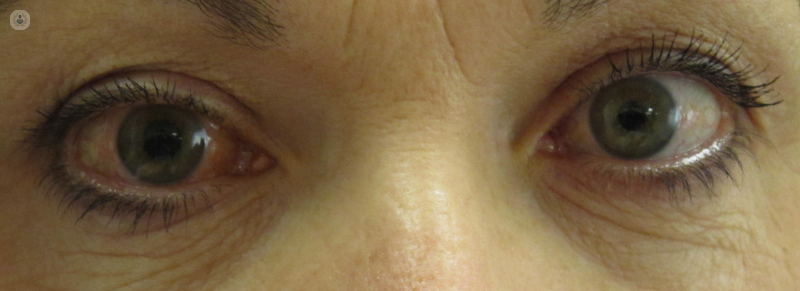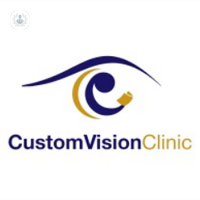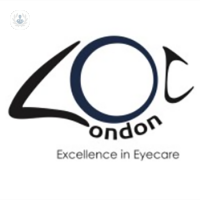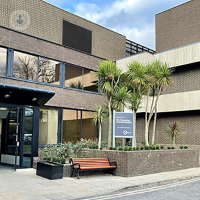What is ocular hypertension?
Ocular hypertension occurs when the pressure inside the eye (intraocular pressure) is higher than normal. This pressure is measured in millimetres of mercury (mmHg) and is considered normal when it is between 10-21mmHg. It should be noted that intraocular pressure increases with age.
Although ocular hypertension often does not cause any symptoms, if left untreated it can lead to glaucoma – the high intraocular pressure damages the optic nerve, which causes vision loss. For this reason, it is important to have regular eye check-ups to catch the condition before it causes more serious problems.
What are the symptoms of ocular hypertension?
Ocular hypertension does not typically manifest with any specific symptom, which makes it difficult to detect. The only way to diagnose ocular hypertension is through an eye exam, in which the ophthalmologist will use a tonometer to measure the eye pressure. If it is elevated on two different occasions, ocular hypertension will likely be diagnosed.
Causes of ocular hypertension
The main cause of ocular hypertension is insufficient drainage of the aqueous humour (the fluid inside the front of the eye). The eye is constantly making this fluid, while an equal amount flows out of the eye. If more fluid enters the eye than is drained from it, this causes an increase in pressure inside.
People at particular risk of this occurring include those with a family history of ocular hypertension, myopia or diabetes.
In some cases, ocular hypertension can be caused by an eye injury, certain diseases, and certain medications.
What is the treatment for ocular hypertension?
Early diagnosis is very important, so that ocular hypertension does not cause damage to the optic nerve or loss of vision. Depending on how high the pressure is, the ophthalmologist might not prescribe a treatment immediately, but instead monitor the intraocular pressure with frequent check-ups.
If treatment is needed, it may include medication to reduce the intraocular pressure, often in the form of eye drops. In order for the treatment to work, it is essential to strictly follow the doctor's instructions.
In some cases, surgery in the form of laser trabeculoplasty is used to lower eye pressure.
02-20-2013 05-12-2023Ocular hypertension
Mr Francesco Stringa - Ophthalmology
Created on: 02-20-2013
Updated on: 05-12-2023
Edited by: Carlota Pano
What is ocular hypertension?
Ocular hypertension occurs when the pressure inside the eye (intraocular pressure) is higher than normal. This pressure is measured in millimetres of mercury (mmHg) and is considered normal when it is between 10-21mmHg. It should be noted that intraocular pressure increases with age.
Although ocular hypertension often does not cause any symptoms, if left untreated it can lead to glaucoma – the high intraocular pressure damages the optic nerve, which causes vision loss. For this reason, it is important to have regular eye check-ups to catch the condition before it causes more serious problems.
What are the symptoms of ocular hypertension?
Ocular hypertension does not typically manifest with any specific symptom, which makes it difficult to detect. The only way to diagnose ocular hypertension is through an eye exam, in which the ophthalmologist will use a tonometer to measure the eye pressure. If it is elevated on two different occasions, ocular hypertension will likely be diagnosed.
Causes of ocular hypertension
The main cause of ocular hypertension is insufficient drainage of the aqueous humour (the fluid inside the front of the eye). The eye is constantly making this fluid, while an equal amount flows out of the eye. If more fluid enters the eye than is drained from it, this causes an increase in pressure inside.
People at particular risk of this occurring include those with a family history of ocular hypertension, myopia or diabetes.
In some cases, ocular hypertension can be caused by an eye injury, certain diseases, and certain medications.
What is the treatment for ocular hypertension?
Early diagnosis is very important, so that ocular hypertension does not cause damage to the optic nerve or loss of vision. Depending on how high the pressure is, the ophthalmologist might not prescribe a treatment immediately, but instead monitor the intraocular pressure with frequent check-ups.
If treatment is needed, it may include medication to reduce the intraocular pressure, often in the form of eye drops. In order for the treatment to work, it is essential to strictly follow the doctor's instructions.
In some cases, surgery in the form of laser trabeculoplasty is used to lower eye pressure.
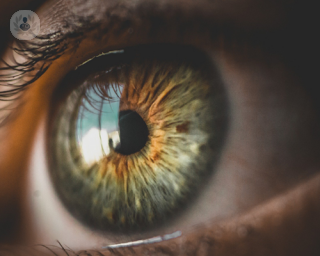

All about selective laser trabeculoplasty (SLT)
By Mr Thomas Kersey
2024-10-29
Leading consultant ophthalmologist Mr Thomas Kersey takes a detailed look at selective laser trabeculoplasty, answering frequently asked questions about the procedure, in this informative article. See more


What is ocular hypertension and why is it important?
By Mr Vik Sharma
2024-10-29
Ocular hypertension is a measure of your eye pressure and can indicate risk to other eye conditions, such as glaucoma. Mr Vik Sharma, a top ophthalmologist, explains why being aware of ocular hypertension is so important. See more
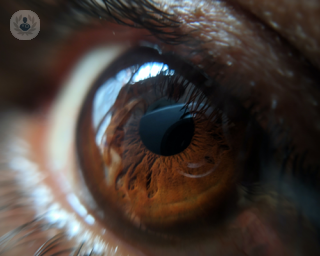

The benefits of selective laser trabeculoplasty (SLT)
By Mr Dan Lindfield
2024-10-29
SLT is becoming the first choice for lowering eye pressure worldwide. Learn why from a multi-award-winning consultant ophthalmologist Mr Dan Lindfield. See more
Experts in Ocular hypertension
-
Mr Vik Sharma
OphthalmologyExpert in:
- Glaucoma
- Cataracts
- Glaucoma surgery
- Lens replacement (intraocular lenses)
- Ocular hypertension
- Blepharoplasty
-
Miss Anna Bhan
OphthalmologyExpert in:
- Cataracts
- Glaucoma
- YAG laser capsulotomy
- Ocular hypertension
- iStent
- Emergency eye care
-
Mr Mrinal Rana
OphthalmologyExpert in:
- Cataracts
- Corneal diseases
- Keratoconus
- Pterygium and pinguecula
- Ocular hypertension
- Dry eye
-
Dr Olubunmi Ogunleye
OphthalmologyExpert in:
- Glaucoma
- Ocular hypertension
- Selective laser trabeculoplasty (SLT)
- YAG laser iridotomy
- YAG laser capsulotomy
- Secondary glaucoma
-
Mr Jack Gormley
OphthalmologyExpert in:
- Cataract surgery
- Refractive surgery
- Laser eye surgery
- Corneal transplant
- Ocular hypertension
- Dry eye
- See all

Custom Vision Clinic
Custom Vision Clinic
Bowcliffe Hall, Bramham, Wetherby
No existe teléfono en el centro.
By using the telephone number provided by TOP DOCTORS, you automatically agree to let us use your phone number for statistical and commercial purposes. For further information, read our Privacy Policy
Top Doctors

London Ophthalmology Centre
London Ophthalmology Centre
25 Welbeck St, London
No existe teléfono en el centro.
By using the telephone number provided by TOP DOCTORS, you automatically agree to let us use your phone number for statistical and commercial purposes. For further information, read our Privacy Policy
Top Doctors

The Clementine Churchill Hospital - part of Circle Health Group
The Clementine Churchill Hospital - part of Circle Health Group
Sudbury Hill, Harrow HA1 3RX
No existe teléfono en el centro.
By using the telephone number provided by TOP DOCTORS, you automatically agree to let us use your phone number for statistical and commercial purposes. For further information, read our Privacy Policy
Top Doctors
-
Custom Vision Clinic
Bowcliffe Hall, Bramham, Wetherby, WetherbyExpert in:
- Laser eye surgery
- Complex eye conditions
- Vision correction
- Ophthalmology
-
London Ophthalmology Centre
25 Welbeck St, London , W1G Marylebone LondonExpert in:
- Cataracts
- Eyelid surgery
- Laser eye surgery
- Complex eye conditions
- ICL lens implants
- Eye Microsurgery
-
The Clementine Churchill Hospital - part of Circle Health Group
Sudbury Hill, Harrow HA1 3RX, West LondonExpert in:
- Abdominal ultrasound
- Abdominoplasty
- Acne
- Allergies bronchopulmonary
- Allergies nose and ears
- Allergy Dermatitis
- See all
- Most viewed diseases, medical tests, and treatments
- Minimal access surgery (keyhole surgery)
- Botulinum toxin (Botox™)
- Medicolegal
- Dermal fillers
- Headache
- Strabismus (squint)
- Glaucoma
- Diplopia (double vision)
- Amblyopia
- Vision therapy
